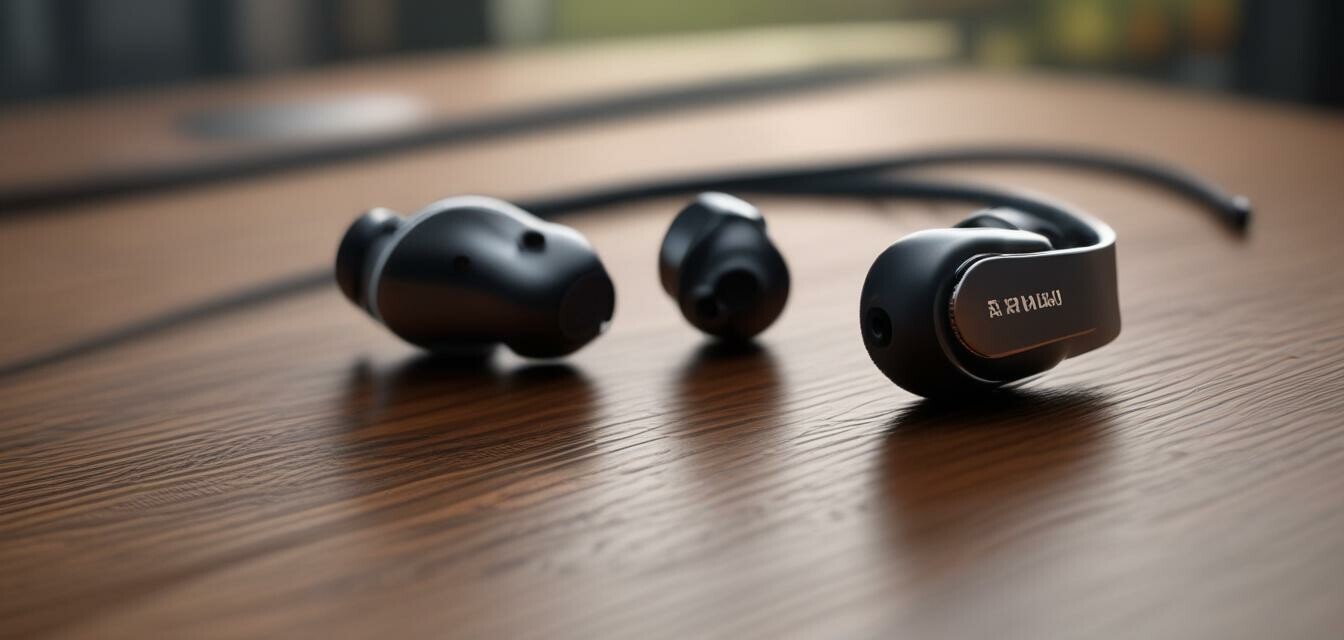
Tips for Using Earbuds During Critical Listening
Key Takeaways
- Choose the right earbud type for your listening needs.
- Optimize your listening environment to minimize distractions.
- Ensure proper fit and seal for enhanced sound quality.
- Use high-quality audio sources for the best experience.
- Consider the importance of earbud maintenance.
When it comes to critical listening, audiophiles and music enthusiasts alike recognize that the sound quality is paramount. While over-ear headphones are often favored for these sessions, earbuds can also offer a compact and convenient solution. Below, we will explore best practices for utilizing earbuds during critical listening sessions to maximize sound quality and overall experience.
Choosing the Right Earbuds
Choosing the right type of earbuds is crucial for an optimized listening experience. Here are some factors to consider:
| Type of Earbuds | Description | Ideal Use Case |
|---|---|---|
| In-Ear Monitors | Typically provide excellent sound isolation and accurate sound reproduction. | Professional studios, critical listening environments. |
| True Wireless Earbuds | Convenient with no wires but may compromise sound quality. | Casual listening, daily commute. |
| Noisy-Cancellation Earbuds | Reduces background noise for a concentrated listening experience. | Travel, loud environments. |
Setting Up Your Listening Environment
Creating the right environment is key to enhancing your listening experience. Here are some tips:
- Choose a quiet space free from distractions.
- Dim the lighting to create a relaxing atmosphere.
- Ensure the seating position is comfortable to avoid fatigue.
- Consider using sound-dampening materials to minimize external noise.
Ensuring a Proper Fit and Seal
A proper fit and seal are essential for earbuds to deliver peak performance. Here’s how you can achieve that:
- Experiment with different sizes of ear tips to find the best fit.
- Insert earbuds snugly into your ear canals to create a seal.
- Adjust the angle of the earbud for optimal comfort.
Using High-Quality Audio Sources
To achieve the best sound, always use high-quality audio files. Consider these recommendations:
- Opt for lossless formats like FLAC or WAV.
- Steer clear of heavily compressed formats like MP3 for critical listening.
- Use specialized audio platforms that offer high-resolution audio streaming.
Earbud Maintenance Tips
Maintaining your earbuds not only enhances their longevity but also ensures the best sound quality. Here are some maintenance tips:
- Clean your earbuds regularly to remove ear wax and sweat.
- Store them in a protective case to prevent damage.
- Check the wires for any wear and tear if applicable.
Additional Tips for Critical Listening
- Take breaks to avoid listening fatigue.
- Test different genres of music to evaluate sound quality.
- Adjust settings on your audio source for optimal output, such as equalizer settings.
Conclusion
In conclusion, while over-ear headphones are often the go-to for critical listening, earbuds can serve as a formidable alternative when used correctly. By choosing the right type, optimizing your environment, ensuring a proper fit, using high-quality audio sources, and maintaining your earbuds properly, you will significantly enhance your listening experience. For further insights on audio quality and best practices, check out our other posts in the Audio Quality Insights category.
Pros
- Compact and portable design.
- Noise isolation for focused listening.
- Can provide excellent sound quality if chosen correctly.
Cons
- May not be as comfortable for long listening sessions.
- Potential fit issues with certain ear shapes.
- Sound quality may be compromised with low-quality models.